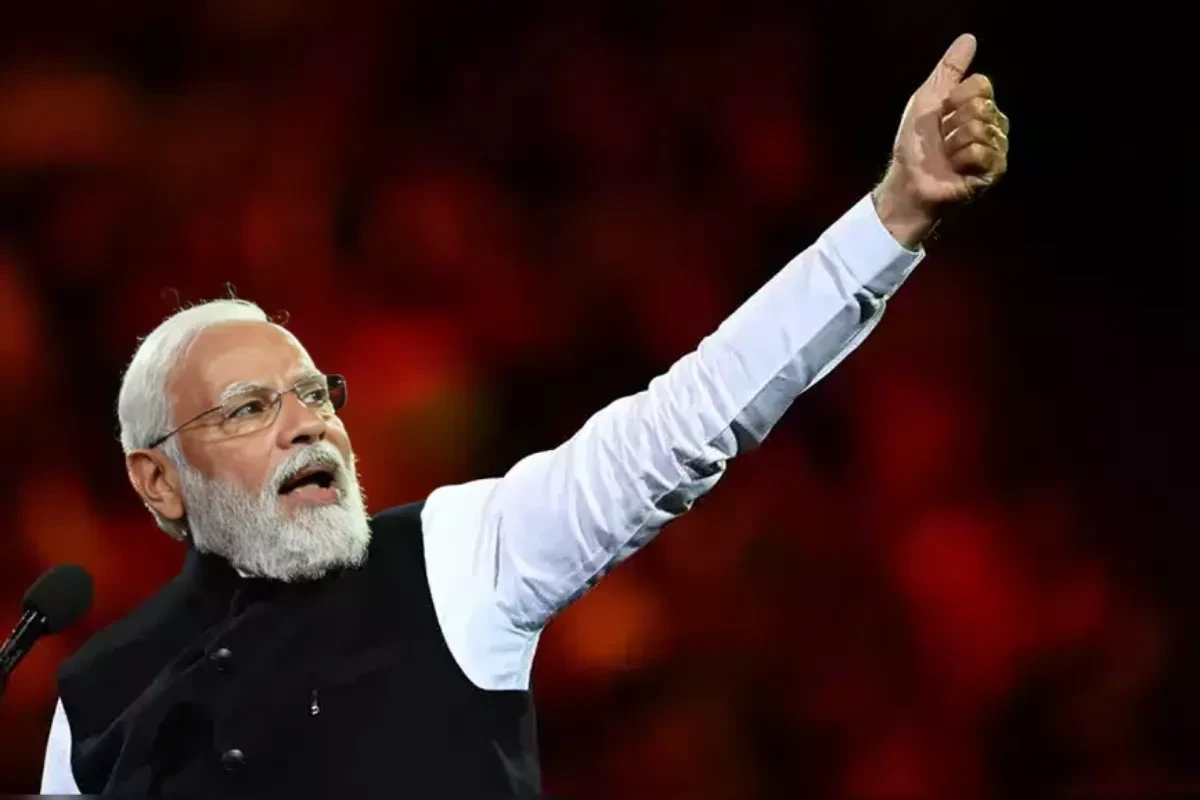
India’s economic landscape is painting a bright picture with the latest data revealing an impressive surge in growth. The third quarter of 2023-24 witnessed a remarkable 8.4% growth, exceeding expectations and marking a significant improvement compared to the 4.3% growth recorded in the same period last year.
This robust performance signifies several positive developments, including strong domestic demand, supportive government policies, and a stable political environment.
Strong Q3 Growth Fuels Optimism
The Indian economy showcased remarkable resilience and dynamism in the third quarter of the ongoing financial year (October-December 2023). The National Statistical Office (NSO) reported an impressive 8.4% growth, surpassing the anticipated figures and signifying a significant rise from the previous year’s 4.3% growth in the same quarter. This positive trend instills confidence in the overall economic trajectory and paints an optimistic picture for the future.
Prime Minister Modi Hails Economic Performance
Prime Minister Narendra Modi welcomed the news of India’s robust 8.4% GDP growth in Q3 2023-24.
Full Year Growth Expected to Exceed Initial Estimates
Building on the momentum of the strong Q3 performance, the NSO has revised its full-year growth projection for 2023-24 upwards. Initially estimated at 7.3%, the revised forecast now stands at a promising 7.6%, indicating a continuous upward swing in the economic graph. This revision reflects the robust performance across various sectors and highlights the potential for further growth in the remaining months of the fiscal year.
Manufacturing, Mining, and Construction Lead the Charge
Several key sectors played a pivotal role in propelling this impressive growth. The manufacturing sector, in particular, emerged as a significant contributor, showcasing a robust performance. Additionally, sectors like mining and quarrying, as well as construction, witnessed significant growth, contributing to the overall economic surge. This diversified growth across essential sectors signifies a well-rounded and sustainable economic expansion.
GDP Poised for a Leap Forward
GDP, which reflects the true value of goods and services produced within the economy, is expected to reach an estimated Rs 172.90 lakh crore in 2023-24, compared to Rs 160.71 lakh crore recorded in the previous year. This indicates a substantial increase and signifies the growing economic output of the nation. Similarly, nominal GDP, which accounts for the current market value of goods and services, is projected to touch Rs 293.90 lakh crore, reflecting a promising 9.1% growth rate. These figures paint a positive picture of India’s expanding economic footprint and growing market size.
India Aspires for a $7 Trillion Dream
The Indian government envisions a future where India emerges as a global economic powerhouse. The ambitious goal is to propel India to become the world’s third-largest economy by 2025, with a targeted GDP of $5 trillion. This vision doesn’t stop there; the government further aspires for India to reach the coveted position of a $7 trillion economy by 2030. These ambitious targets reflect the government’s commitment to driving sustained economic growth and propelling India onto the global economic stage.
Factors Fueling the Growth Engine
Several key factors are contributing to the current economic upswing in India:
- Robust Domestic Demand: Strong private consumption and investment are driving domestic demand, acting as a vital engine for economic growth. This consistent demand for goods and services within the Indian market is a key factor behind the sustained economic expansion witnessed over the past three years.
- Government Reforms: The government’s focus on implementing various reforms and measures over the past decade is credited with contributing to the current economic strength. These reforms have helped to create a more conducive environment for businesses to thrive, fostering innovation and investment.
- Manageable Inflation: Inflationary pressures remain under control, hovering around manageable levels. This stability in prices allows for healthy economic activity and consumer spending, contributing to overall growth.
- Political Stability: The stable political environment at the central government level fosters investor confidence and encourages businesses to make long-term investments. This stability creates a predictable environment, which is crucial for sustainable economic growth.
- Easing Monetary Policy: Indications of the central bank potentially nearing the end of its monetary tightening cycle further invigorate the economic outlook. This suggests a potential easing of interest rates, which could stimulate borrowing and investment, further propelling economic activity.
text in the module Advanced settings.

